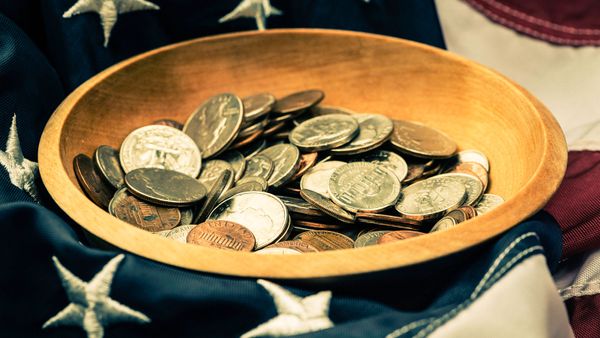To explain the phenomenal success and significance of Kickstarter, think of a slumber party. If you ever participated in a tween-age sleepover, then you're probably familiar with the party game "light as a feather, stiff as a board." In this enjoyably freaky exercise, four or more children kneel around the "deceased" body of their friend, which is lying stiff on the floor. As proof that the soul has departed, the friends attempt to lift the body using nothing more than one or two fingers each. As they chant "light as a feather, stiff as a board," the body "magically" levitates off the ground with seemingly little effort from each participant. This is customarily followed by uncontrollable giggling and sugar-based snacks.
"Light as a feather, stiff as a board" is a wonderful example of the old maxim, "Many hands make light work." A single person would have a heck of a time lifting a stiff-backed friend, but the same difficult task can be made incredibly easy with enough helping hands.
Advertisement
The Web service Kickstarter is based on this same principle. The mission of Kickstarter is to help creative people -- artists, musicians, filmmakers, designers and the like -- fund their own creative projects. Art, after all, costs money. In fact, in the 15th century, the wealthy Medici family of Florence acted as patron to great artists like Michelangelo and Leonardo da Vinci. Today, creative people are more likely to receive funding from private studios and galleries, non-profit arts organizations or government agencies like the National Endowment for the Arts (NEA). But arts grants like these are very difficult to secure and are rarely available for smaller sums of money. Kickstarter is revolutionary because it turns average Internet users into patrons of the arts -- sometimes for $5 or less.
Kickstarter is the leading example of an exciting idea called crowdfunding. Crowdfunding is a twist on crowdsourcing, in which an organization uses the talents and time of hundreds, thousands or millions of people to create or improve a product or service [source: Dell]. Wikipedia is a prime example of crowdsourcing [source: The Economist]. Instead of hiring professional writers to research and write each encyclopedia entry, Wikipedia taps the collective knowledge of millions of users to create and edit the articles for free.
Similarly, Kickstarter uses crowdfunding to pay for creative projects by soliciting small donations from the "crowd," which are the anonymous patrons that visit the site. Kickstarter didn't invent crowdfunding: Different Web sites, blogs and charitable organizations have been perfecting the idea of so-called micropatronage since the mid-1990s. President Barack Obama funded 88 percent of his 2008 presidential campaign through individual donations, many of them small ($250 or less) and collected via the Internet [source: OpenSecrets.org].
But part of the reason Kickstarter has been so successful has to do with the subtle twists and restrictions it has imposed on the crowdfunding model. On the next page, we'll outline the Kickstarter model and why it has produced over $75 million in arts funding in two short years [source: Walker].
Advertisement




